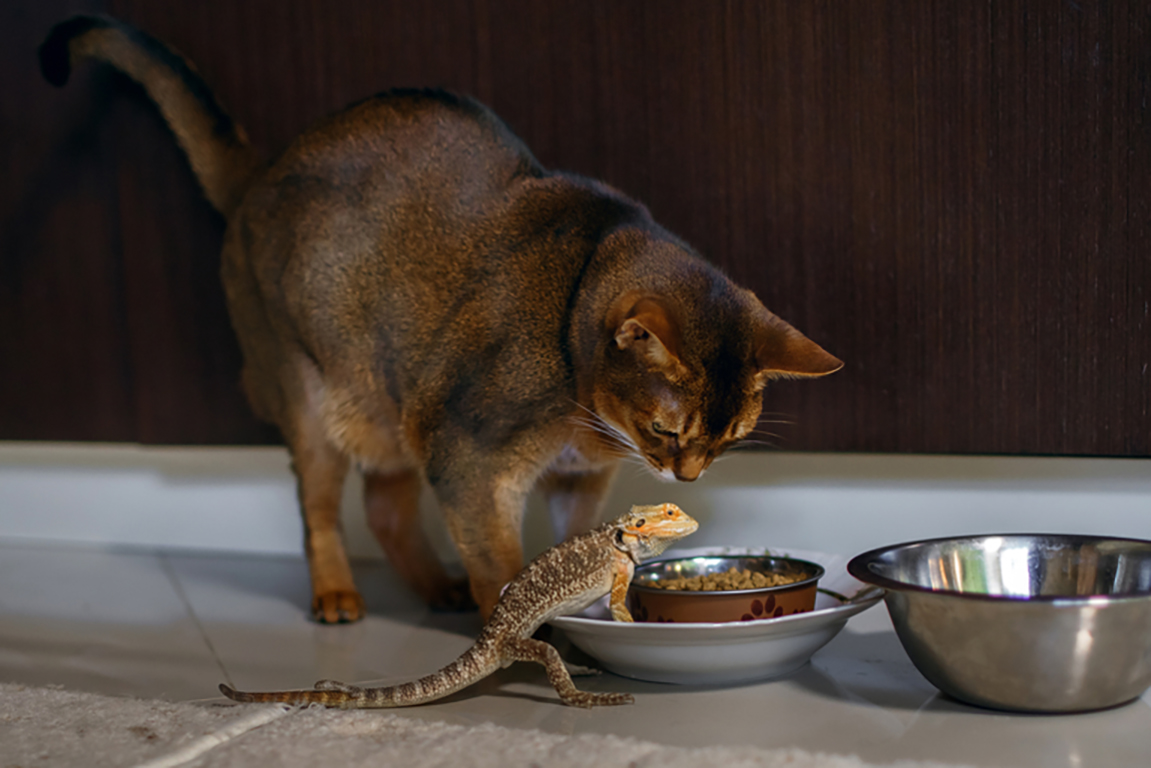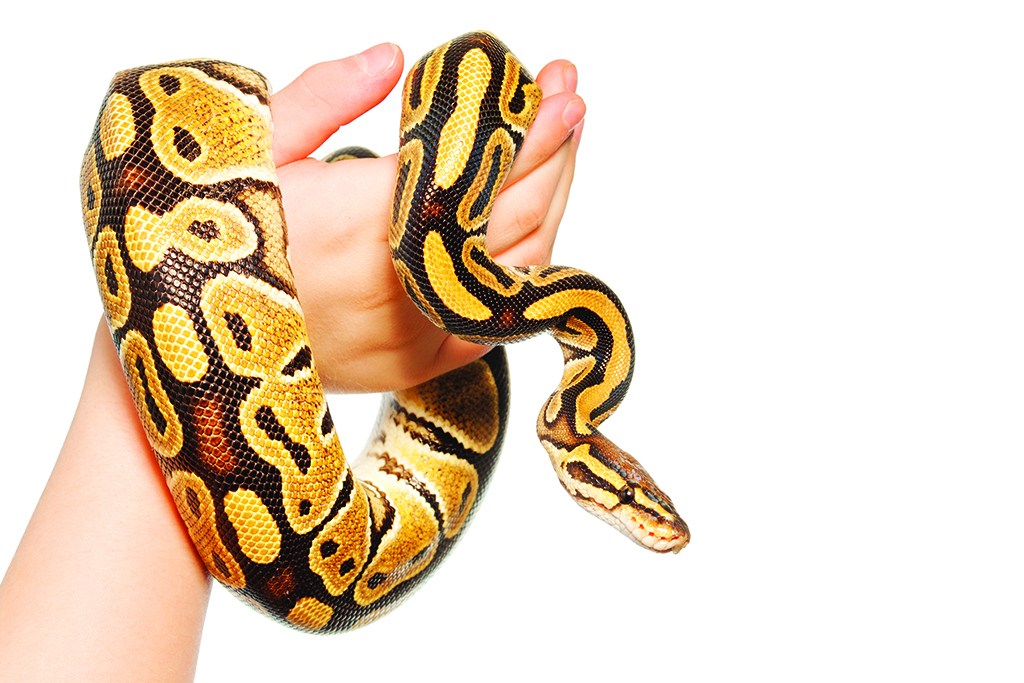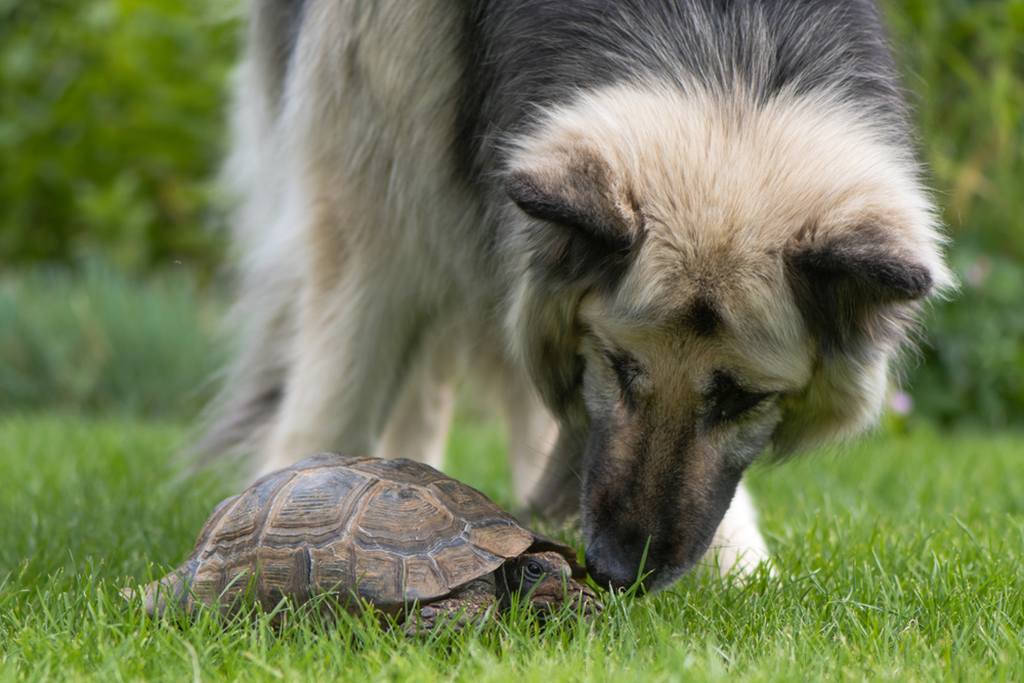HOW TO INTRODUCE A REPTILE TO A MULTI-SPECIES HOUSEHOLD
Bringing a Reptile into your home is an exciting time; however, it can quickly become a stressful situation, not just for them but for all the other animals living in the house.
Making slow adjustments between a new Reptile and other animal members of the household is a tedious process, but it’s important to make sure everyone feels safe, at ease, and secure with each other. If the introduction process fails, the situation could quickly escalate and result in injuries.
Here are eight general rules to consider when introducing a Reptile to a multi-species household.

1. DIRECT SUPERVISION
The absolute fundamental rule when having a multi-species household is to never leave them alone unsupervised.
Reptiles aren’t meant to be cuddly as much as Cats and Dogs, because many factors may easily stress them out. Also keep in mind that an accident is just around the corner when you keep many animals in a house.
Although they may seem to get along, you must always assume that they still have wild instincts and sometimes have urges they cannot control.
For the sake of everyone’s safety, never allow them to stay together unsupervised.

2. ACKNOWLEDGE THEIR INSTINCTS
Your animal companions may have become quite comfortable at home, but they have their ancestors’ blood flowing through their veins, which means they sometimes still adhere to the natural order. Dogs may eat Birds, Cats may eat Reptiles, and Reptiles may also eat Birds – this is natural in the wild.
Your Dog or Cat may be the most loving and gentle fluffy being in the house, but as soon as you bring in someone small or different to the house, tread carefully, because things could get ugly fast.
Never assume that your animal companion won’t hurt a Fly; sometimes, their hunting instincts kick in when you least expect it.

3. DIFFERENT REPTILES, DIFFERENT RESPONSES
Not only should you keep your Dogs or Cats in check, but you should also take into account what kind of Reptile you’re bringing in.
Snakes and Lizards big and small have their pros and cons. Snakes obviously prefer isolation; however, when given the opportunity to escape, they may end up eating one of your furry pals while you’re away.
Lizards, such as Monitor Lizards and Iguanas, are the middle ground – they may be large enough to defend themselves against other animals in the house should things go wrong, but they may be small enough to get eaten by the family Cat.

4. GIVE THEM SPACE
Always take into account the potential risks and create a secure environment for everyone. Make sure all enclosures and areas are safe and the locks are working perfectly.
Keep your new Reptile in an environment away from constant
stress, such as a patrolling Cat or a curious Dog, especially if they’re a sensitive species, just like Chameleons who can get sick from anxiety.
Remember to give them their own section of the house where they can relax without keeping one eye open at night.

TIP
Dogs and Cats rely heavily on scent, so having them smell an object that’s been near the reptile may help ease their curiosity. Try rubbing a cloth on the Reptile and have your furry friends sniff it so that they can slowly get familiar with each other.
5. IDENTIFY STRESS BEHAVIORS
All animals have stress indicators that they normally display when agitated. For example, when Bearded Dragon gets scared, they will puff up, turn their beards black, or attempt to bite whether they deem is a threat.
Dogs would change their body posture whenever they’re on the hunt or in defense. Their eyes focus; they may growl, bark, or start getting aggressive out of nowhere, which would also stress out your Reptile at the same time.
Identifying the stress behavior of the animals in the house is a great way to know how they’re feeling and how you should approach things.
If you see that your Cat, Dog, or Reptile are acting unusually or defensively, it may be best to take a step back and try introductions at another time and at a slower pace.

6. ENGAGE IN NEUTRAL TERRITORY
Most animals are territorial and get confident in their own space, but bringing them into a neutral territory, such as the living room or anywhere away from their sleeping space, puts them in a somewhat less aggressive state.
Neutral spaces are a great way for your animals to interact with one another, but it is still not advisable to leave them alone together, no matter how long they’ve known one another.

7. HOLD A MEETING WITH BARRIERS
If you’re keen on having them meet and interact as one big happy family no matter what, it’s best to have the Reptile and other animals to socialize behind barriers.
This not only keeps everyone safe, but is also a great way to observe their reactions. This setup creates a controllable environment in case things go south so that it’s easier to prevent accidents.

8. PREPARE FOR THE WORST
Accidents may happen when you least expect it, and even playtime can be dangerous, so always have a backup plan. Prepare things like iodine solution, bandages, and animal carriers at all times.
Have your veterinarian’s info written down somewhere and know their clinics’ location by heart. Have a plan B ready in case it’s late, and know where the nearest 24/7 animal clinic is.
As a responsible keeper, it’s best to keep their safety and well- being as a top priority. Consider the risks and benefits of having multiple animals in your household, and proceed with caution when trying to make them get along.






